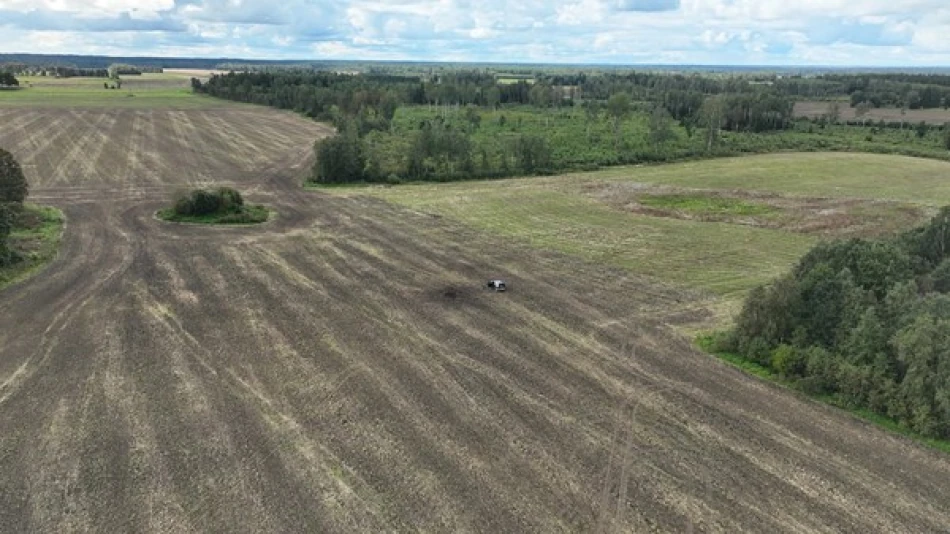
Ukrainian Drone Crashes in Estonia: Uncovering the Incident's Impact
Ukrainian Drone Crashes in Estonia After Striking Russian Baltic Energy Target
A Ukrainian military drone crashed in Estonia following a weekend attack on Russian oil and gas infrastructure, highlighting how the war's expanding drone operations are increasingly spilling beyond the primary conflict zone. The incident underscores the growing risks NATO allies face as Ukraine escalates long-range strikes against Russian energy assets near their borders.
Drone Found Days After Cross-Border Strike
Estonian police chief Margo Palusoon confirmed Tuesday that the Ukrainian drone likely crashed on Sunday morning, with debris discovered by a farmer in Tartu County on Monday. The timing coincides with Ukraine's Saturday evening assault on a Russian oil and gas platform at Ust-Luga port in the Baltic Sea, located near the Estonian border.
"This was a Ukrainian drone that attacked Russian targets. There is no evidence it was a Russian drone," Palusoon told Estonian radio ERR, definitively attributing the aircraft to Ukrainian forces.
Electronic Warfare Likely Caused Navigation Failure
The drone's crash in Estonian territory suggests it was likely diverted by Russian electronic warfare countermeasures—a common defensive tactic Moscow employs to disrupt GPS navigation and communications systems of incoming aircraft. This electronic interference frequently causes drones to lose their programmed flight paths, potentially explaining how the aircraft ended up dozens of kilometers from its intended target.
Estonian authorities have not yet determined whether the drone entered their airspace via Latvia or directly from Russian territory, indicating the complexity of tracking these increasingly sophisticated cross-border operations.
Ukraine's Expanding Energy War Strategy
The Ust-Luga strike represents Ukraine's continued campaign to target Russian energy infrastructure, a strategy that has intensified throughout 2024. The port facility serves as a crucial export terminal for Russian oil and gas, making it a high-value target in Ukraine's efforts to disrupt Moscow's energy revenues funding the war effort.
This approach mirrors Ukraine's successful attacks on Russian refineries and energy facilities throughout the conflict, which have contributed to significant disruptions in Russian fuel supplies and export capabilities.
NATO Border Complications
The Estonian crash highlights a growing challenge for NATO members bordering Russia as Ukraine extends its operational reach. Similar incidents have occurred with both Russian and Ukrainian aircraft straying into allied airspace, creating potential diplomatic complications and raising questions about air defense coordination.
Estonia, as a NATO member and former Soviet republic, maintains a particularly sensitive position regarding the conflict. The country has been among Ukraine's strongest supporters while simultaneously managing the security implications of hosting a 300-kilometer border with Russia.
Implications for Regional Security
This incident demonstrates how modern drone warfare increasingly transcends traditional battlefield boundaries. As both sides deploy longer-range unmanned systems, neighboring countries face mounting risks of debris, misdirected strikes, or deliberate provocations.
For NATO planners, such events underscore the need for enhanced air defense coordination and clear protocols for handling wayward military aircraft from the conflict zone. The alliance must balance supporting Ukraine's defensive efforts while protecting member states from unintended consequences of the expanding drone war.
 Layla Al Mansoori
Layla Al Mansoori







